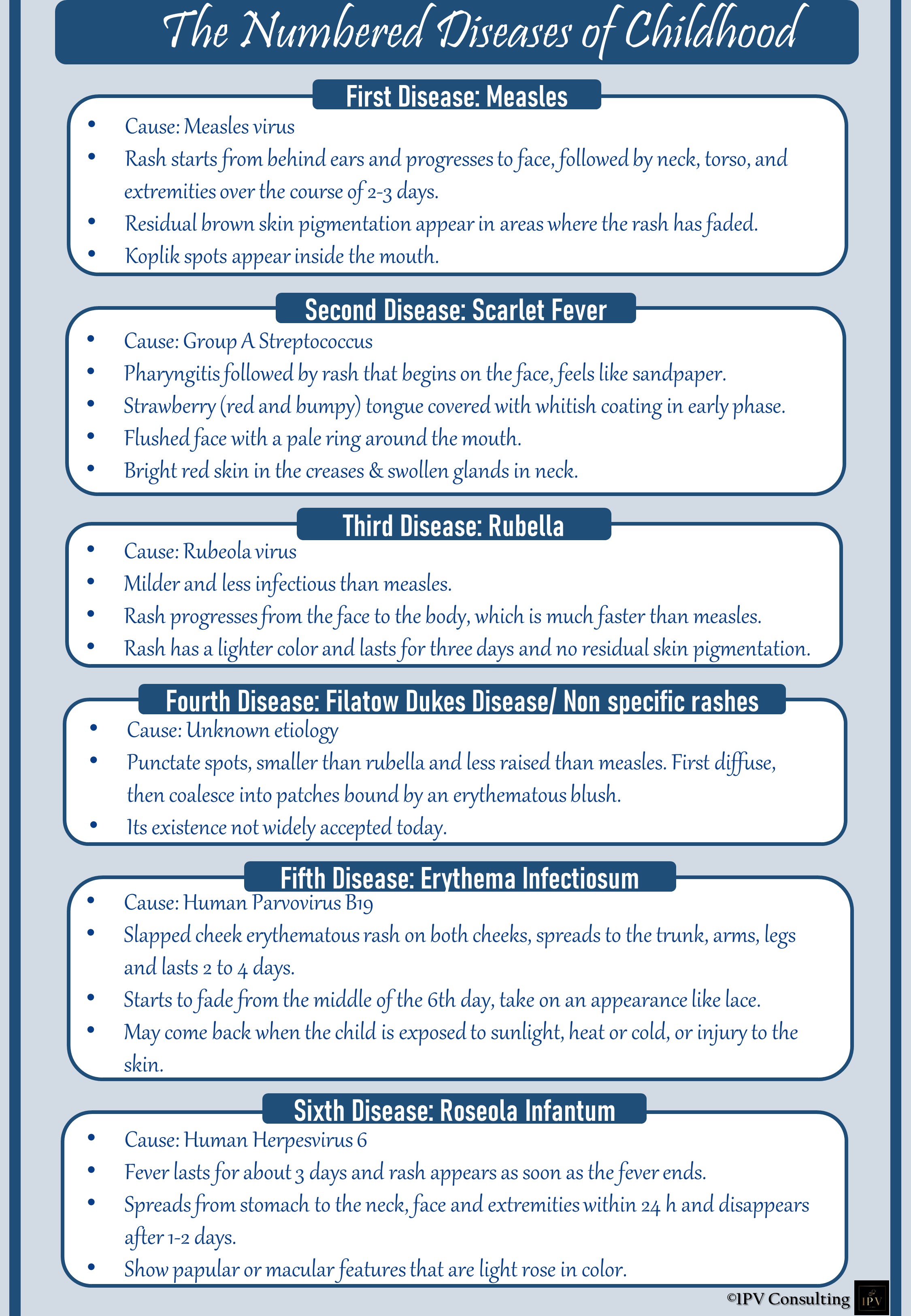The Numbered Diseases of Childhood
Fever and rashes in children pose a significant diagnostic challenge to clinicians in primary care. According on how the exanthem looks clinically, the majority of these disorders can be neatly classified as maculopapular, petechial, papular, or vesicular. In some circumstances, it can be challenging to distinguish an infection from a non-infectious disease clinically, thus determining the aetiology frequently requires a thorough laboratory evaluation. Also, it's crucial to make a diagnosis based on the patient's medical history, the timing of their symptoms, a thorough physical examination, and paraclinical tests.
Measles, rubella, and scarlet fever were the three exanthematous infections for which rashes were traditionally classed. Then, in 1900, Dr. Clement Dukes, the Rugby School's medical officer, identified a different exanthem that he named the "fourth sickness." The fifth disease was added to the list in 1905 and was known as erythema infectiosum. The sixth disease (roseola infantum) was later recognized, whereas the majority of observers dismissed the fourth disease since there was insufficient evidence to substantiate it as a distinct entity.
For kids, the skin is a great indicator of infection. In cases where there are no obvious clinical indications of infection, early detection of exanthema can avoid complications. Below, we have emphasized the summary of one-to-six disease of childhood.







